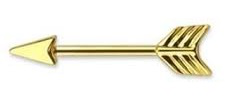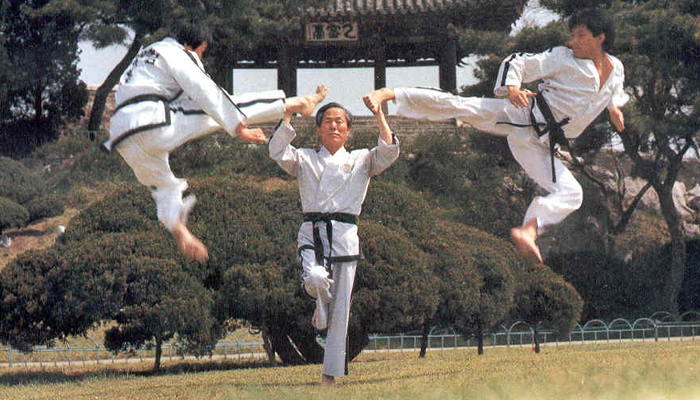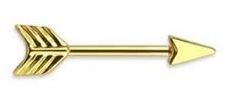Patterns / Tuls
What is a Pattern (Hyung / Tul)?
A pattern is a set of fundamental movements, mainly defence and attack, set in a logical sequence to deal with one or more imaginary opponents. Patterns are also an indication of a student's progress, a barometer in evaluating an individual's technique.
The interpretation of a Pattern
The name of a pattern, the number of movements and the diagrammatic symbol of each pattern represents either heroic figures in Korean history or instances relating to historical events.
Why do we perform Patterns?
We practise patterns to improve our Tae Kwon-Do techniques, to develop sparring techniques, to improve flexibility of movement, master body shifting, develop muscles, improve balance and breathing control, develop fluid and smooth motions and to gain rhythmical movements. They also enable us to acquire techniques, which cannot be obtained from other forms of training. Tae Kwon-Do is an art, when first developed the only way to train was by performing patterns.
Why do we learn the meanings of Patterns?
We learn the meanings of patterns to draw inspiration from the people in the pattern who have dedicated and sacrificed themselves for what they believe is right. They have applied one or more of the tenants of Tae Kwon-Do and have fought for their own ideals. We should learn to show the same dedication in doing what we feel is right. The meanings also give us a brief description of the history of Korea.
Why 24 Patterns?
The reason for 24 patterns is because the founder, Major General Choi Hong Hi, compared the life of a man with a day in the life of the earth. He believes that people should strive to bequeath a good spiritual legacy to coming generations and in doing so gain immortality. Therefore if we can leave something behind for the welfare of mankind, maybe it will be the most important thing to happen in our lives, as the founder says..
"Here I leave Tae Kwon-Do for mankind as a trace of man of the late 20th century. The 24 patterns represent 24 hours, one day, or all my life. The name of the pattern, the number of movements, and the diagrammatic symbol of each pattern symbolizes either heroic figures in Korean history or instances relating to historical events".
Pattern Tips
- Patterns should begin and end on the same spot. This will indicate the performers accuracy.
- Correct posture and facing must be maintained at all times.
- Muscles of the body should be tensed or relaxed at the proper critical moments in the pattern.
- The pattern should be performed in a rhythmic movement with the absence of stiffness. .
- Each pattern should be accelerated or decelerated according to instructions.
- Each pattern should be perfected before moving on to the next.
- Students should know the purpose of each movement.
- Students should perform each movement with realism.
Click the belts below for detailed pattern descriptions
Chon-Ji – 19 moves - Yellow Tag Belt
CHON- JI means literally “the Heaven the Earth”. It is, in the Orient, interpreted as the creation of the world or the beginning of human history, therefore, it is the initial pattern played by the beginner. This pattern consists of two similar parts; one to represent the Heaven and the other the Earth.
Dan-Gun – 21 moves - Yellow Belt
Do-San – 24 moves - Green Tag Belt
Won-Hyo – 28 moves - Green Belt
Yul-Gok – 38 moves - Blue Tag Belt
Joong-Gun – 32 moves - Blue Belt
JOONG-GUN is named after the patriot Ahn Joong-Gun who assassinated Hiro-Bumi Ito, the first Japanese governor-general of Korea, known as the man who played the leading part in the Korea-Japan merger. There are 32 movements in this pattern to represent Mr. Ahn’s age when he was executed in a Lui-Shung prison (1910).
Toi-Gye – 37 moves - Red Tag Belt
Hwa-Rang – 29 moves - Red Belt
HWA-RANG is named after the Hwa-Rang youth group, which originated in the Silla Dynasty about 600 AD. This group eventually became the actual driving force for the unification of the three Kingsdoms of Korea. The 29 movements refer to the 29th Infantry Division, where Tae kwon-Do developed into maturity.
Choong-Moo – 30 moves - Black Tag Belt
CHOONG-MOO was the name given to the great Admiral Yi Soon-Sin of the Yi Dynasty. He was reputed to have invented the first armoured battleship (Kobukson) in 1592, which is said to be the precursor of the present day submarine. The reason why this pattern ends with a left hand attack is to symbolize his regrettable death, having no chance to show his unrestrained potentiality checked by the forced reservation of his loyalty to the king.
Kwang-Gae – 39 moves - 1st Dan to 2nd Dan
KWANG-GAE is named after the famous Kwang-Gae-Toh-Wang, the 19th King of the Koguryo Dynasty, who regained all the lost territories including the greater part of Manchuria. The diagram represents the expansion and recovery of lost territory. The 39 movements refer to the first two figures of 391 A. D., the year he came to the throne.
Po-Eun – 36 moves - 1st Dan to 2nd Dan
PO-EUN is the pseudonym of a loyal subject Chong Mong-Chu (1400) who was a famous poet and whose poem “I would not serve a second master though I might be crucified a hundred times” is know to every Korean. He was also a pioneer in the field of physics. The diagram represents his unerring loyalty to the king and country towards the end of the Koryo Dynasty.
Gae-Baek – 44 moves - 1st Dan to 2nd Dan
Eui-Am – 45 moves - 2nd Dan to 3rd Dan
EUI-AM is the pseudonym of Son Byong Hi, leader of the Korean independence movement on March 1, 1919. The 45 movements refer to his age when he changed the name of Dong Hak (Oriental culture) to Chondo Kyo (Heavenly way religion) in 1905. The diagram represents his Indomitable Spirit, displayed while dedicating himself to the prosperity of his nation.
Choong-Jang – 52 moves - 2nd Dan to 3rd Dan
Ko-dang – 39 moves - 2nd Dan to 3rd Dan
Juche - 45 moves - 2nd Dan to 3rd Dan
Juche is a philosophical idea that man is the master of everything and decides everything. In other words, the idea that man is the master of the world and his own destiny. It is said that this idea was rooted in Baekdu Mountain which symbolizes the spirit of the Korean people. The diagram represents Baekdu mountain.
Juche was introduced in 1983, as a replacement for Ko-Dang. General Choi developed the pattern to reflect some of the new techniques that had been perfected in more recent years; while it contains many of the same movements as Ko-Dang it also includes the slow motion kicks, two direction kick, dodging kicks and flying hand attacks. It is also said to challenge the 2nd degree more, as Kodang was considered to be comparatively easy.
Juche is optional in the IMA syllabus and will not be used for formal Dan gradings
Sam-IL – 33 moves - 3rd Dan to 4th Dan
Yoo-Sin – 68 moves - 3rd Dan to 4th Dan
YOO-SIN is named after General Kim Yoo Sin, a commanding general during the Silla Dynasty. The 68 movements refer to the last two figures of 668 A.D., the year Korea was united. The ready posture signifies a sword drawn on the right rather than left side, symbolizing Yoo Sin’s mistake of following his Kings’ orders to fight with foreign forces against his own nation.
Choi-Yong – 46 moves - 3rd Dan to 4th Dan
CHOI-YONG is named after General Choi Yong, premier and commander in chief of the armed forces during the 14th century Koryo Dynasty. Choi Yong was greatly respected for his loyalty,patriotism, and humility. He was executed by his subordinate commanders headed by general Yi Sung Gae, who later became the first King of the Lee Dynasty.
Yong-Gae – 49 moves - 4th Dan to 5th Dan
Ul-Ji – 42 moves - 4th Dan to 5th Dan
UL-JI is named after general Ul-Ji Moon Dok who successfully defended Korea against a Tang’s invasion force of nearly one million soldiers led by Yang Je in 612 A.D., Ul-Ji employing hit and run guerilla tactics, was able to decimate a large percentage of the force. The diagram represents his surname. The 42 movements represent the author’s age when he designed the pattern.
Moon-Moo – 61 moves - 4th Dan to 5th Dan
MOON-MOO honours the 30th King of the Silla Dynasty. His body was buried near Dae Wang Am (Great King’s Rock). According to his will, the body was placed in the sea “where my soul shall forever defend my land against the Japanese.” It is said that the Sok Gul Am (Stone cave) was built to guard his tomb. The Sok Gul Am is a fine example of the culture of the Silla Dynasty. The 61 movements in this pattern symbolize the last two figures of 661 A.D. when Moon Moo came to the throne.
So San – 72 moves - 5th Dan to 6th Dan
SO-SAN is the pseudonym of the great monk Choi Hyong Ung (1520-1604) during the Lee Dynasty. The 72 movements refer to his age when he organized a corps of monk soldiers with the assistance of his pupil Sa Myunh Dang. The monk soldiers helped repulse the Japanese pirates who overran most of the Korean peninsula in 1592.
.
 Pictured: General Choi Hong Hi, 9th Dan. Founder of Tae Kwon-Do.
Pictured: General Choi Hong Hi, 9th Dan. Founder of Tae Kwon-Do.














